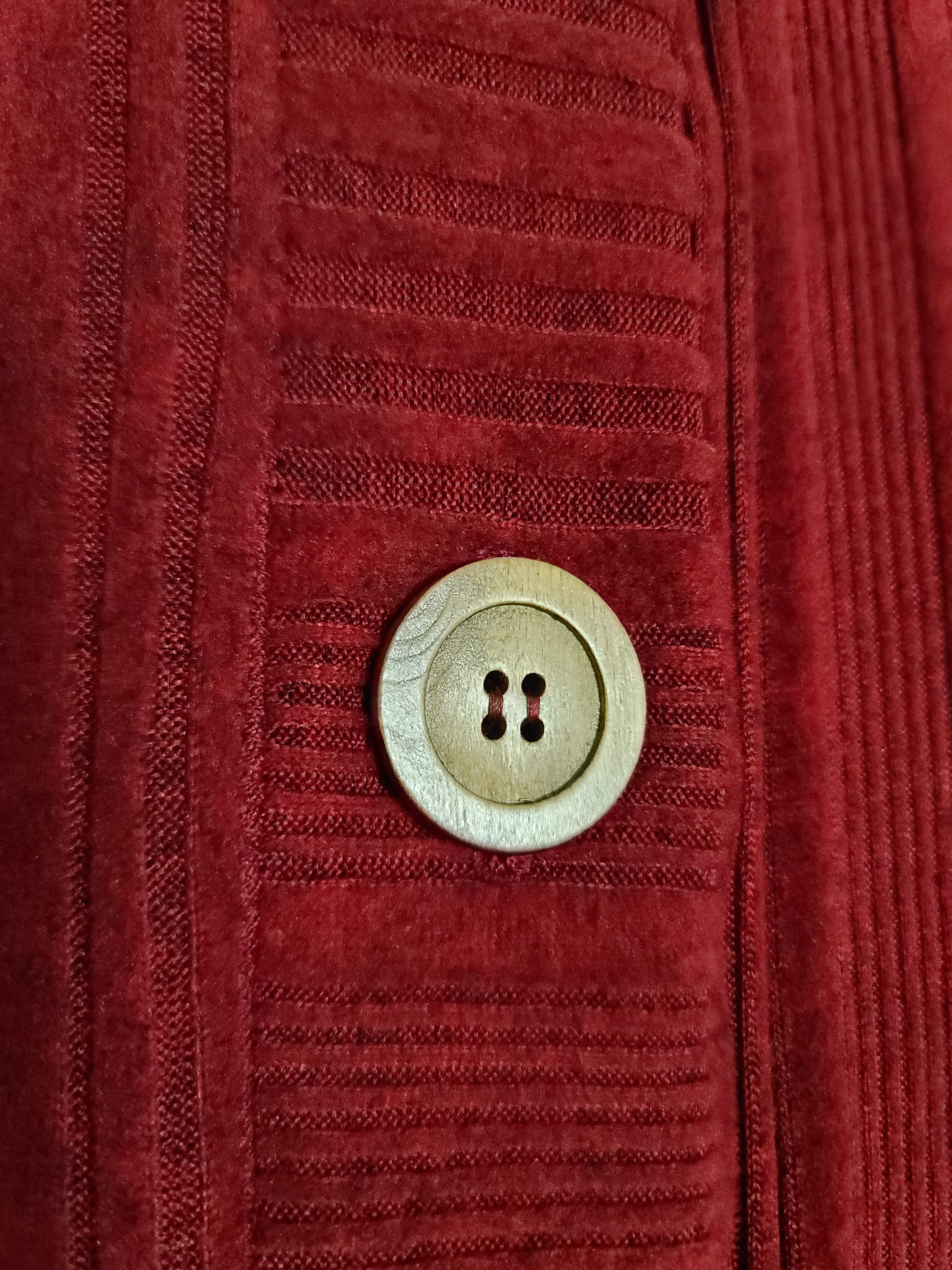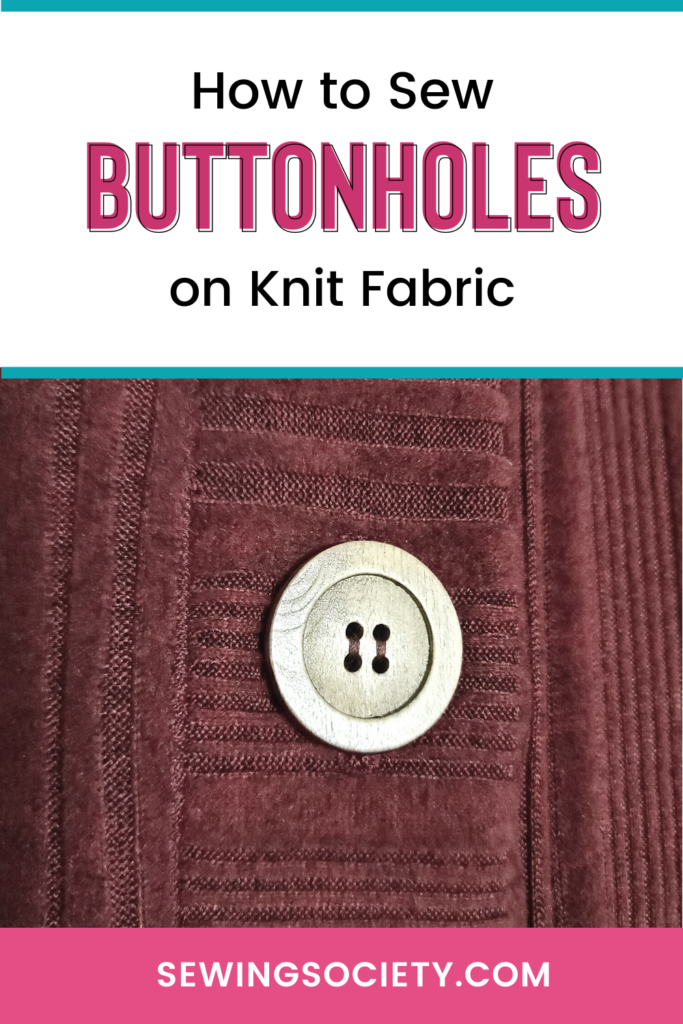Disclosure: This post may contain affiliate links. I earn a small commission when you click a link and make a purchase. Thanks for supporting SewingSociety.com!
Are you scared of making buttonholes?
If so, you’re not alone…
Even people who have been sewing for years get nervous about it. After all, you could spend a few hours sewing something and then ruin it with a botched buttonhole.
Making buttonholes on stretchy fabric is even scarier — more things can go wrong!
We recently wrote a post about how to sew better buttonholes, but we wanted to take it one step further with some tips on sewing buttonholes on knits. Here’s what you need to know:
Always Stabilize Your Fabric
Because knit fabric is stretchy, the secret to creating buttonholes that look even and do not get stretched out is stabilizer. For best results, you’ll want to use a lightweight fusible on the backside of your buttonhole area.
Fusible tricot interfacing is a good option for stabilizing buttonholes on knit fabric because it has a little bit of stretch. It’s a versatile interfacing that we recommend having on hand for a variety of purposes beyond buttonholes. You can also use it to stabilize collars and hems on knit garments!
Alternatively, you could use a tear-away stabilizer. This is a good option if you’re worried about someone seeing the backside of your buttonhole because tear-away stabilizer can easily be removed once your buttonhole is created.
Whenever you’re creating buttonholes on knit fabric that has a texture or visible pile, we recommend using a stabilizer on both the bottom and top of your fabric. A water-soluble stabilizer works perfectly as a topper because it can be completely removed with water after your buttonhole is created.
Several things can go wrong when you’re sewing buttonholes on knit fabric. Stabilizer helps with a lot of them!
Practice, Practice, Practice!
No matter what stabilizer you use, always create a few test buttonholes on some scraps of fabric before attempting them on your garment. This helps ensure your buttonholes will turn out the way you want. Just be sure to sew your test buttonholes on the same number of layers as on your garment and use a ballpoint/stretch needle.
Hopefully your test buttonholes will turn out great, but a common adjustment you might need to make when sewing buttonholes on knit fabric is to lower the tension. Some sewing machines also have special knit buttonhole settings you can try. All sewing machines are a little different, so check your operations manual.
Buttonholes are often the very last step on a garment sewing project. They require careful planning and precision. Don’t rush, and don’t skip the test buttonhole step! The practice really does help.
Here’s a pic of a cute wooden button on a knit cardigan I made in October. Doesn’t it look great? The buttonholes were created with a tear-away stabilizer on the bottom and a water-soluble stabilizer on the top. They turned out great!
Are you ready to sew some buttonholes on knit fabric? You can do this! With a little practice, they’ll turn out great.
Also Read: How to Sew Stretchy Fabric Without Losing Your Mind
Share this post on Pinterest!





